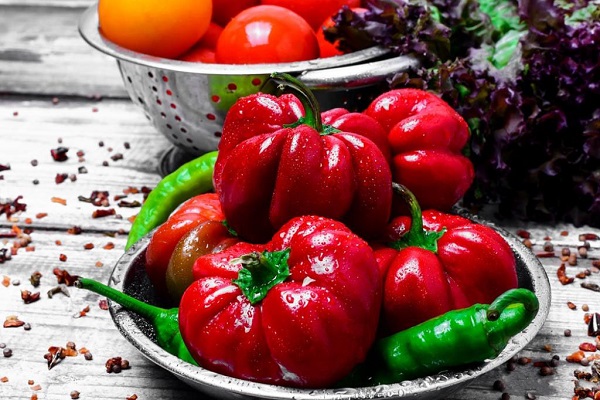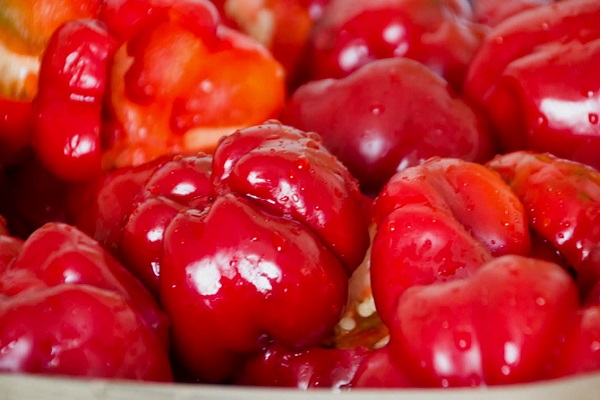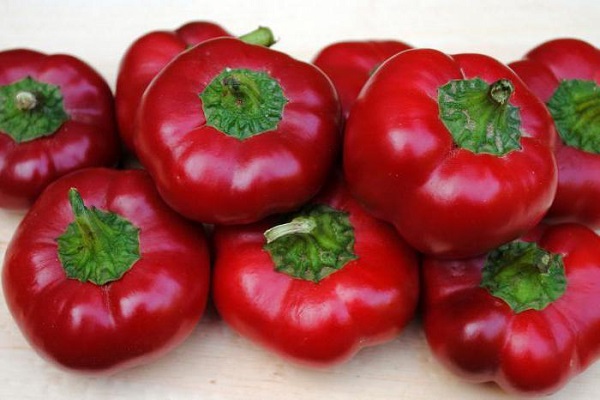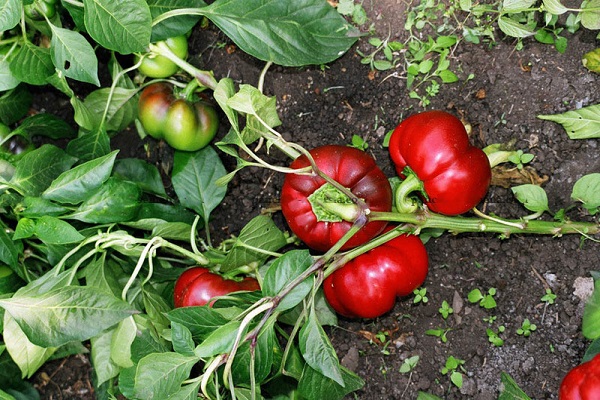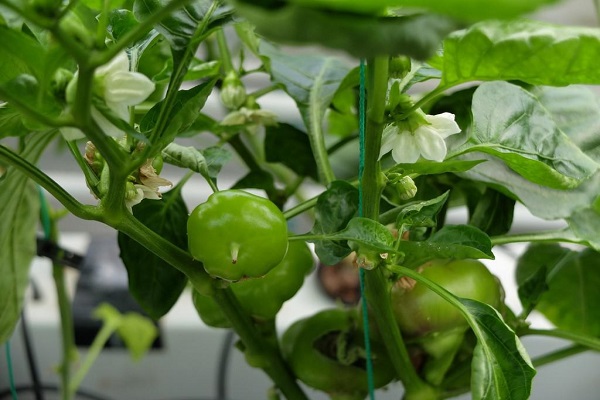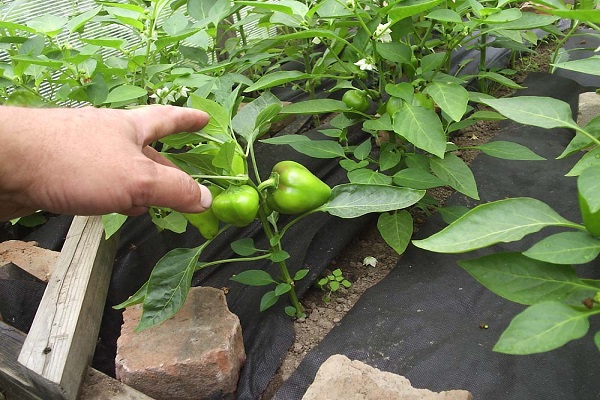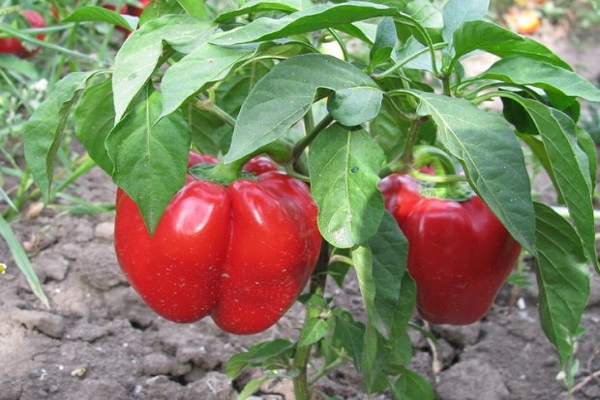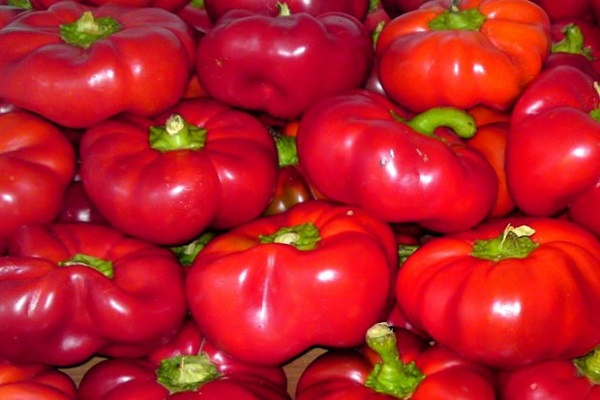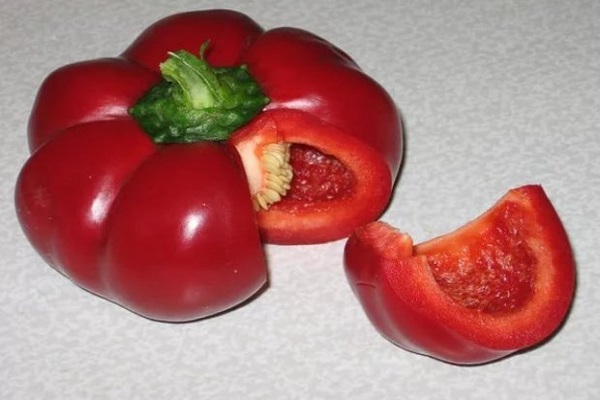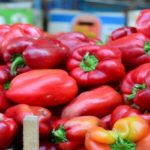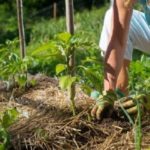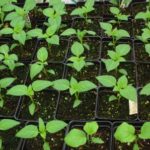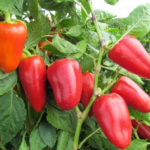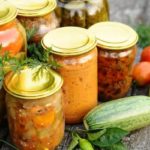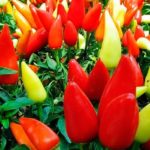Ratunda pepper is a representative of sweet varieties of vegetables, characterized by a rounded fruit shape with moderate ribbing. Peppercorns have thick, fleshy walls and have a honey taste with a slight spicy bitterness. Another name for the pepper variety is Gogoshary.
Advantageous characteristics of the type
Ratunda sweet pepper belongs to the mid-season plant types. It ripens 95-100 days after pollination. The plant has a long, strong stem, from half a meter to a meter in height. The description of the variety includes the main qualities of the fruit:
- At ripeness they reach a weight of one hundred to one hundred and fifty grams.
- The thickness of the fleshy walls is from seven millimeters and above.
- Unripe fruits are dark green, turning red or yellow as they ripen.
- The pepper tastes sweet and hot, with a honey aftertaste.
If you grow sweet pepper varieties correctly, in warm summers they produce from three to five kilograms of tasty vegetables per square meter.
Representatives of round peppers
There are few varieties of vegetables similar to Ratunda pepper, but they are all popular among summer residents. Some please with early ripening, others with medium and late ripening. It depends on the growing region and summer weather conditions. When choosing one variety or another, you need to decide on the purpose of using the fruit. If cutting a vegetable is necessary, then the shape of the fruit does not play a role here.
But stuffed fruits should have a regular, preferably round, shape. Small peppercorns are also good to preserve.
Popular semi-standard variety
It’s not for nothing that the Kolobok pepper is called that, because its fruits are spherical with almost no edges. Thick walls can be nine to fourteen millimeters. And the size of the fruit is 5 by 8 centimeters with a weight of ninety grams or more. Kolobok reaches technical ripeness after 108-112 days. In this case, the fruits will be light green. They will turn red if 140-158 days have passed since the first shoots. And the taste will depend on the color of the vegetable. Red fruits are sweeter than green ones.
There are only excellent reviews about Kolobok pepper. All summer residents note its ease of care, rapid ripening, and the sweet taste of its thick walls. I especially like to use the fruits for canning along with tomatoes and preparing stuffed vegetables.
Ruby sweetness
Excellent canned food is made for the winter if you use Ruby pepper. It is grown in regions with different climatic conditions in greenhouse conditions and open ground. The height of the bush is no more than half a meter. The round-flattened fruits begin to ripen 160-178 days after emergence. At first they are light green in color, then gradually turn red, acquiring a ruby hue. Peppers reach a weight of 110-150 grams. From one square meter you can harvest over three kilograms of juicy vegetables.
High-yielding pepper variety Olenka
Among the early ripening varieties of heat-loving vegetables, Olenka pepper can be distinguished. It is distinguished by its high yield - up to nine kilograms of juicy sweet hearths are obtained from one square meter. Their weight is usually ninety grams. Characteristics of culture include:
- height of a medium-sized bush;
- drooping fruit of a flat-round shape with slight wrinkles;
- thickness of the fleshy wall is 7 millimeters;
- color from dark green to red.
It is better to grow the plant under film coverings.
Sweet candy
A hybrid of the round type, Sweetie pepper can have a color from yellowish-green to red. The round-cone-shaped shape with the fleshy, aromatic pulp of the vegetable allows it to be consumed fresh or preserved with whole fruits. They are small - only forty to fifty grams in weight. But the wall thickness reaches five to seven millimeters. The peculiarity of the hybrid is:
- early ripeness after 85-95 days;
- height of the bush is forty to sixty centimeters;
- high yield - kilogram per bush;
- resistance to diseases - fusarium, rot, viral mosaic.
With good care of the plant, you can get the first fruits as early as May.
Features of cultivation
All vegetable plants that produce round fruits are similar to the Gogoshary pepper variety. It is not for nothing that they are united under this common name. The peculiarity of their cultivation is:
- growing through seedlings at an air temperature of 25 degrees;
- picking seedlings;
- planting in high beds;
- mulching the soil around the bushes;
- regular watering and fertilizing with mineral fertilizers;
- harvesting during the period of acquiring technical maturity.
The seeds of a heat-loving crop are planted for seedlings in February, since its age must reach seventy days before transplantation.
Vegetable seedlings should be picked as soon as they have two true leaves. It is better to plant them in separate pots. As soon as the risk of spring frosts goes away, the plant is planted, covering it with paper caps for the first time. The seedlings are placed in holes measuring 30 x 30 centimeters with a distance of 25 centimeters from each other. Sweet varieties should not be planted next to bitter ones, otherwise they will be pollinated and their taste will become different.
Water the vegetable plant frequently and abundantly. Feeding begins ten to twelve days after planting. First, mullein, diluted in a ratio of 1:5 or bird droppings - 1:15. Then dissolve thirty grams of ammonium nitrate, forty grams of superphosphate, and seventy grams of potassium salt in ten liters of water. Add one liter of nutrient solution to each bush. The interval between feedings is two to three weeks.
Vegetable stems are tied when there are a lot of fruits and there is a possibility that they will break. There is no need to plant the vegetable. Pepper fruits are harvested when they reach technical maturity, that is, they become an even green color.To make the peppercorns turn red faster, they are placed in a cool place in a canvas bag.
Ripe red peppers are used to prepare various canned products. It's good and fresh in salads.
If peppers are grown in a greenhouse, then it is necessary to warm the room well before planting, laying manure around the edges. Vegetables are only planted in a warm greenhouse in early May. You can alternate beds with peppers with tomatoes. The fertile soil in the greenhouse will allow you to plant up to six vegetable bushes on one square meter.
During the pepper growing season, the greenhouse must be ventilated, trying to maintain the air temperature within 25-27 degrees and humidity at 85 percent.
Pepper Ratunda, or Gogoshary, is popular for good reason. You can prepare many delicious dishes from it both on weekdays and holidays.

